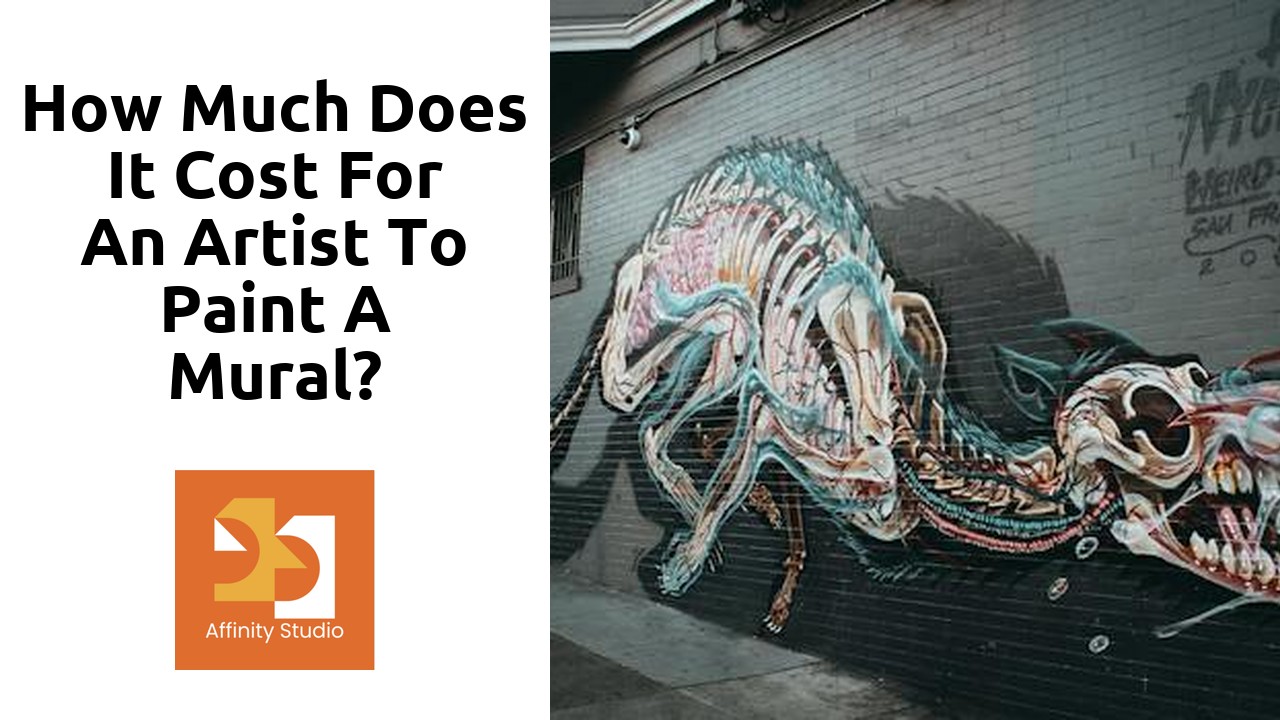Table Of Contents
Unraveling the Expenses: A Breakdown of Mural Painting Costs
An artist painting a mural is a creative endeavor that requires careful planning and consideration of various expenses. The costs involved in mural painting can vary significantly depending on several factors. One of the primary factors affecting the expense is the size of the mural. Larger murals naturally require more paint, additional materials, and lengthier work hours, thus increasing the overall cost. The complexity and intricacy of the design also play a role in determining the expenses. Murals featuring intricate details or unique patterns require a higher level of skill and time commitment, which can impact the overall cost. Additionally, the location of the mural can also influence the expenses, as factors such as accessibility, safety measures, and required permits may need to be considered.
Navigate to these guys for detailed information.
The Price Tag of Creativity: Understanding the Investment in Mural Art
Mural art has always been a unique and captivating form of expression. From vibrant street murals to intricate designs in indoor spaces, artists have the ability to transform blank walls into mesmerizing pieces of art. However, the cost associated with commissioning a mural can vary significantly. It is important to understand that this investment goes beyond simply paying for materials and labor – it encompasses the creative vision and skill of the artist, the size and complexity of the project, and the overall value that the artwork brings to its surroundings.
One of the key factors that influences the price of a mural is the size of the project. Larger murals usually require more time and materials, which in turn increases the overall cost. Additionally, the complexity of the design also plays a role in determining the price tag. Intricate details, multiple layers, and special effects can demand more skill and time from the artist, leading to a higher cost. Another important aspect to consider is the location of the mural. Outdoor murals may require additional measures to protect the artwork from weather conditions, vandalism, and fading over time, which can incur additional expenses. Ultimately, the investment in mural art is not just about the initial cost, but also the long-term value it brings to the space and the community.
From Blank Walls to Masterpieces: Exploring the Financial Aspect of Mural Painting
When it comes to mural painting, the financial aspect plays a significant role in determining the feasibility of the project. From small-scale murals to large, intricate artworks, various factors contribute to the overall cost. One of the primary considerations is the size of the mural. Larger murals require more materials and labor, resulting in higher expenses. Additionally, the complexity of the design also affects the price, as intricate details and elaborate artwork demand more time and effort from the artist. Furthermore, the location of the mural can impact the cost. For instance, outdoor murals may involve additional expenses for weather-resistant materials and equipment.
Another crucial factor influencing the financial aspect of mural painting is the expertise and reputation of the artist. Highly skilled and renowned artists often command higher rates due to their mastery and recognition in the art world. Additionally, factors such as the artist’s experience, portfolio, and demand can also influence the pricing. The desired level of customization and originality in the mural design can also impact the cost, as customized artwork requires additional time and effort from the artist. Finally, the duration of the project, including the estimated timeline for completion, can affect the overall expenses, as it determines the amount of resources and labor required. Taking these various factors into account is essential when exploring the financial aspect of mural painting.
Budgeting for Art: Estimating the Cost of Commissioning a Mural
When commissioning a mural, it is important to have a clear understanding of the potential costs involved. The price of a mural can vary greatly depending on various factors such as the size of the wall, the complexity of the design, and the experience and reputation of the artist. As a general guideline, artists typically charge per square foot for mural projects. This means that the larger the mural, the higher the cost. Additionally, intricate and detailed designs may require more time and effort on the part of the artist, resulting in a higher price. It is also worth noting that renowned artists may have higher rates due to their established reputation and demand for their work.
Beyond the Canvas: Unveiling the True Value of Mural Paintings
Mural paintings have the unique ability to transform blank walls into captivating masterpieces that captivate the imagination. They bring life and energy to urban spaces, creating a sense of identity and pride within communities. However, their value extends far beyond their aesthetic appeal. Mural paintings have the power to inspire, provoke thought, and spark conversations on important social and cultural issues. They serve as visual narratives that communicate stories, histories, and values, making them invaluable contributions to the urban landscape. The true value of mural paintings lies not only in their artistic beauty but also in their ability to forge connections, foster dialogue, and shape the identity of a place.
Investing in mural art goes beyond the monetary aspect. It is an investment in creativity, culture, and community. Mural paintings have the potential to revitalize neighborhoods, attract visitors, and stimulate economic growth. They create a sense of place and serve as landmarks that contribute to the unique character of a city. Furthermore, mural projects often involve collaborations between artists, residents, and local organizations, fostering a sense of inclusivity and belonging. By investing in mural art, communities invest in their own cultural heritage, enabling artists to continue creating meaningful and impactful works that enrich the public realm.
Investing in Urban Art: Evaluating the Price Range for Mural Projects
The price range for mural projects can vary greatly depending on various factors. One key determinant is the size of the mural itself. Larger murals require more materials, more time, and often more complex design elements, which can drive up the overall cost. Additionally, the complexity of the design itself can play a role in determining the price. Intricate and highly detailed designs may require more skill and time from the artist, leading to higher costs.
Another factor that can impact the price range for mural projects is the location of the artwork. Murals in highly visible and prominent locations, such as busy city centers or popular tourist destinations, may command higher prices due to increased exposure and demand. On the other hand, murals in less visible or more remote locations may be priced more moderately. The level of accessibility and the potential audience for the artwork are key considerations for artists when determining their rates.
FAQS
How much does it cost to commission a mural?
The cost of commissioning a mural can vary depending on various factors such as the size, complexity, location, and the reputation of the artist. On average, mural prices can range from a few hundred dollars to several thousand dollars.
What factors can affect the cost of a mural painting?
Several factors can influence the cost of a mural painting. These include the size of the mural, the level of detail and complexity, the type of surface to be painted on, any special equipment or scaffolding required, the artist’s experience and reputation, and the location of the mural.
How is the cost of a mural determined?
The cost of a mural is typically determined based on the estimated number of hours it will take the artist to complete the project, the cost of materials, any additional expenses such as renting equipment or hiring assistants, and the artist’s hourly rate or flat fee.
Can I negotiate the price of a mural with the artist?
Yes, it is possible to negotiate the price of a mural with the artist. However, it’s important to keep in mind that artists invest a significant amount of time, effort, and skill into their work, so it’s best to approach negotiations respectfully and be open to finding a mutually satisfactory agreement.
Are there any ongoing maintenance costs for mural paintings?
Depending on the location and type of mural, there may be ongoing maintenance costs to consider. Factors such as weather exposure, vandalism risks, or the need for touch-ups over time can contribute to maintenance expenses. It’s advisable to discuss these potential costs with the artist or a professional mural installer.
Can I hire an artist to paint a mural on my property if I have a limited budget?
Yes, even with a limited budget, it is possible to find artists who are willing to work within your financial constraints. Some artists may offer scaled-down designs or alternative materials to fit your budget while still providing a visually impactful mural. Communication and transparency about your budget from the beginning will help find suitable options.
Can I estimate the cost of a mural myself?
While it can be challenging to estimate the cost of a mural without professional guidance, you can get a rough idea by considering factors such as the size of the mural, the complexity of the design, and the artist’s reputation. However, it is always recommended to consult with an artist or mural specialist to obtain a more accurate estimate.




